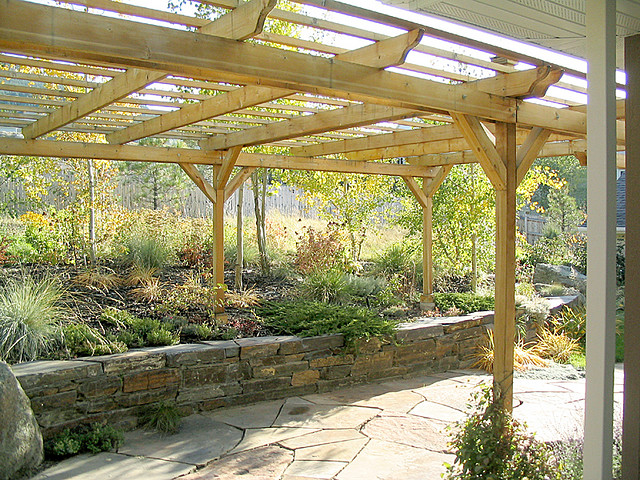Pergolas are originally walkways down garden paths constructed during the early Renaissance period. These have elaborately-designed columns in Victorian patterns with climbing plants on the columns and overhead slats. The plants actually provide the shade to the walkways.
These days, pergolas have evolved from walkways to gazebo-like structures that provide a kind of outdoor sitting “room” usually in gardens and backyards.
Pergola plans today can have simple structures and bare columns and overhead slats as well as more intricately-designed columns for a touch of its original look back in the days of Renaissance.
Before Construction
Prior to constructing your pergola, there are several things that you need to check first.
1. Location. Determine where exactly you want to erect your pergola. This will help you find the right design for the type that you want to build. There are pergolas that are more suitable for a garden setting, others are ideal as an extended attachment to the side of your house; still others are more suitable for a backyard or front yard pergola.
2. Size. Once you have determined the location, the next thing to consider is the size of your pergola. You don’t want it too big that it will pretty much dwarf everything else around it particularly if you are building this within the perimeters of your garden.
3. Underground wirings, etc. Before you start digging, you have to make sure that you will not hit on any underground wirings or cables that provide electricity, water or phone connections. Check the blueprint of your house to see if there are any of these directly under your proposed location for the pergola.
Pergola Plans
Once you have checked all of the above, the next thing to consider is the design of your structure. On the internet, you can find several sites that provide free pergola plans complete with instructions on how to construct these plus all the materials that you will be needing.
One of the most important things that you should also consider is the type of wood that you will be using. It is recommended that you use treated wood as this can withstand weather changes. Cedar and redwood are also ideal for pergolas although these can be a bit expensive.
A popular design for pergola is one that is constructed with planters on each of its four sides. You can construct plant boxes around each of the four posts once you have your structure in place. These will enhance the look of your pergola especially if you are going with a simple structure.



